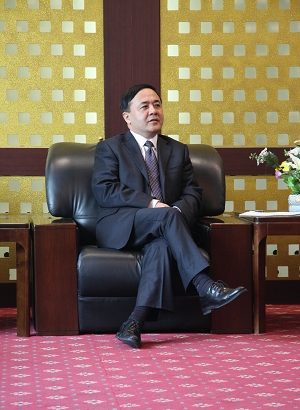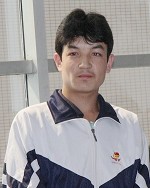By Zhang Yunxing
China.org.cn staff reporter
Xinjiang will strengthen its efforts to develop more minority talent and educate more students from impoverished farmers and herdsmen households, said Tursun Ibrayim, head of the autonomous region's Education Department.
|

|
|
Tursun. Ibrayim, head of the Education Department of Xinjiang Uyghur Autonomous Region. |
"Improving the quality of education among ethnic minorities is important to Xinjiang's social and economic development," said Tursun.
"Education for all" is the wish of every parent, child, educator and government official. But it is no easy task for this underdeveloped northwest region, which cover nearly 1/6 of the nation's territory and has a population of over 21.3 million.
As part of the strategy to develop the west, the State Council has decided to open senior classes in high schools in developed cities like Beijing, Shanghai and Tianjin, and to bring in students from Xinjiang to let them receive high quality basic education.
From September 2000 to September 2008, 50 middle schools in 28 cities opened such classes and enrolled a total of 240,000 Xinjiang students, among whom 90 percent were minority students. From 2004 to 2008, over 6,000 students graduated from these classes, and 95 percent of them went on to universities and colleges to continue their study in these cities.
Tursun said the classes were greatly welcomed by parents and children in Xinjiang, especially those from remote and impoverished areas. "The competition for these classes is even fiercer than for national college entrance examinations," the director said.
The classes offer an equal opportunity for Xinjiang students to access high-quality educational resources in developed cities. But what is perhaps attracting more and more parents and children is the fact that the education is totally free. No tuition fees, no textbook charges, no boarding expenses – and even a train ticket back home every summer holiday is provided by the school. The only expense that a family has to undertake is the pocket money for the student.
High schools that open such classes will get a subsidy of 2,300 yuan per student per year from the government of Xinjiang Uygur Autonomous Region, plus 8,000 to 20,000 yuan from the governments of the province and city where the school is located.
These classes enrolled 1,000 students for the launch year of 2000. The number has increased year by year and students enrolled in 2008 numbered 5,412. About 68 percent of newly enrolled students are children of impoverished rural and pastoral households in Xinjiang. "The initiative is still struggling to meet the demand," said Tursun.
To bring more children of rural and pastoral households into schools, Xinjiang itself has opened junior middle school classes in eight relatively-developed cities including Urumqi, Shihezi, Karamay, Kuntun, Changji, Hami, Korla and Akesu.
Like senior classes in cities outside Xinjiang, these classes are totally free for all students admitted. Current student numbers have reached 15,000, of whom 85 percent were children of farmers and herdsmen living in remote and impoverished areas.
|

|
|
Budureyim.Yasin said he would study harder to repay everybody who have helped him, including the government and all the teachers. |
Urumqi No.66 Middle School is one of the schools that first opened such classes in 2004. Now the junior middle school class has over 900 students, of which 90 percent are students from rural and pastoral areas.
Budureyim Yasin, a second year junior student of the school, is a beneficiary of the policy. His father had sold his family's only valuable possession – a cow – to make up his brother's tuition fee. "I felt desperate at the time as my family had nothing valuable to sell and I thought I might have to leave school, but later I learned the news about the free junior middle school classes. I studied harder and got enrolled at this school. I will study even harder now to repay everybody who made this possible, including the government and all the teachers here," said the little shy Uygur boy in halting Mandarin.
Xinjiang has made great progress in the education sector since liberation, especially following reform and opening up. Before 1949, Xinjiang had only one college with 379 students, 9 middle schools with 2,925 students and 1,335 primary schools with a total of 197,850 students.
As of the end of 2008, Xinjiang had 32 universities and colleges, including national key universities (Xinjiang University), and a religious institute (Xinjiang Islamic Institute). The total number of schools at all levels has reached 8076 and the number of students has reached 4.4 million, of which 57.4 percent are minority students.
Since 2003, 43 billion yuan has been invested in education. This year, the autonomous region decided to allocate another 2 billion yuan to refurbish primary and middle school buildings in poor condition, and to reinforce student dormitories.
(China.org.cn May 15, 2009)